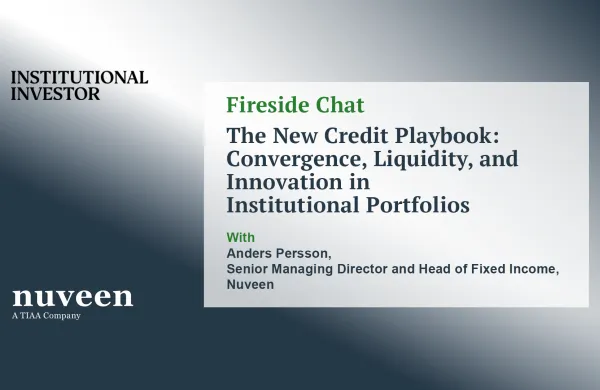For six straight years the Julius Baer International Equity Fund has beaten the EAFE index. So why is it such a struggle to attract institutional accounts?
By Charles Keenan
May 2002
Institutional Investor Magazine
When Richard Pell and Rudolph-Riad Younes took over the Julius Baer International Equity Fund in April 1995, Morningstar had recently ranked it as the worst-performing international stock fund for the previous year. It had declined nearly 34 percent during 1994, versus a 6 percent gain for its benchmark, the MSCI Europe, Australasia and Far East index. Assets had dropped to $12 million from $35 million that year. Embarrassed by the dismal record, the fund's parent, Zurich-based Julius Baer Group, gave Pell and Younes a simple brief: Turn the performance around in six months, or the banking parent would shut the fund down.
Seven years later it is not only still around, it,s flourishing. For six straight years the two portfolio managers have beaten the EAFE. With $633 million in assets, the fund now ranks fifth out of 236 international equity funds rated by Morningstar, with a five-year average annual return of 14.6 percent, versus 9.6 percent for the Standard & Poor's 500 index and 1.4 percent for the EAFE. Encouraged by the results, Baer opened an institutional share class in 1999, which now makes up a solid but unspectacular $315 million of the $633 million in assets.
How did they manage the turnaround in performance? Although the New York,based managers adhere to a core investing style, they,re not afraid to stray from average EAFE sector weightings to gain an edge. For example, about two thirds of their holdings are in Western Europe, compared with the 74 percent weighting for the index. Pell and Younes have also consistently , and wisely , underweighted Japan. Currently, they have 7.5 percent of their assets there, roughly a third the level of the EAFE.
The twosome has chosen instead to overweight emerging markets (11.5 percent, versus 2.7 percent for the index). For example, the fund has snapped up Czech banks for little more than book value, with nice year-to-date returns through late March: One investment, Komercní banka, was up 46 percent.
These types of numbers should have institutional investors banging on the door. But in a world where distribution counts as much as performance, that,s easier said than done. "From a product management standpoint, we have produced the numbers," Pell says. "But we are still pretty much an unknown to the consulting community, and it is up to us to change that." Bob Burke, U.S. practice head for Mercer Manager Advisory in New York, confirms that judgment. "It is a challenge for a firm that has a less familiar brand name to win market share," Burke says.
To boost the ranks of institutional investors, three salespeople are now trying to sell the Julius Baer international fund, up from one a year ago.
They have made some progress. John Wood Bolton, director of investments at Nature Conservancy, which placed $27 million in the fund in January 2000, says the willingness of Pell and Younes to follow their instincts appealed to him. "They are looking at where the next best area is," Bolton says, "not where everybody else is."
Though they have beaten their benchmarks, Pell and Younes still have a tough sell. As a group, international funds are coming off two lousy years. The Baer international fund beat the EAFE, but it still lost 8 percent in 2000 and 18.9 percent in 2001.
And the fund's investment style isn,t easily pigeonholed, because the managers have no qualms shifting among large and midcap and value and growth stocks. "You go where the real value is," Pell says. "I know that for some consultants that is a little troubling, because some of them are big fans of style purity."
Like all active managers, Pell argues against passive investing, particularly in overseas markets that are especially inefficient. "Putting money into EAFE index funds is kind of a loser's game," he says.
If that sounds like a card shark talking, it,s because Pell made his living playing poker when he was in his mid-20s. Now 47, he deploys similar skills to handle the risk management of the fund. "We never want to have one decision sink our performance."
Younes, 40, is a Lebanese-American who grew up in Beirut during the 1970s. As a teenager he often did his homework in bomb shelters, studying by candlelight while rockets and bombs flew overhead. "Having seen death in front of my eyes as a teenager has made me steel-nosed," he says. "I don,t overreact to negative or positive news."
The two managers shun quantitative analysis, instead relying on such triggers as changes in management, mergers and earnings improvements. These days the managers are bullish on Canadian energy companies, betting that many of the smaller ones will either sell out or merge with other producers. That happened last year when Devon Energy Corp. bought Anderson Exploration and Bur-lington Resources acquired Canadian Hunter Exploration.
Typically, the fund holds 150 to 200 stocks, versus a mean of 92 for international equity funds. That relatively high number makes it less volatile, the managers believe. The numbers back them up. Morningstar puts the fund in the 28th percentile , the first being the least volatile , among international funds at the end of February. Relatively low volatility and consistent returns "are the magic combination everyone is looking for," says Gregg Wolper, a Morningstar analyst. Now if institutional investors will just take notice.
Streamlining the RFP process
Facing sluggish growth in a tough market, asset managers are reexamining their internal systems so that they can better respond to requests for proposals by institutional investors. They hope to make the typically unwieldy process of answering RFPs a little less cumbersome.
Although money managers have yet to develop an industry-standard RFP, as many would like, they have made progress in overhauling their databases so that they contain more useful , and more readily accessible , information to respond to RFPs.
"It is a more competitive environment out there right now, and there is a greater recognition that the RFP is an important business generator," says David Reilly, a senior vice president at State Street Research & Management Co., a Boston-based asset manager that runs five institutional funds.
"On the institutional side of the business, at the end of the day it really doesn,t matter how good your collateral material is. If you can,t do a proper RFP, you don,t win the business," says one money manager.
When they issue RFPs in a manager search, plan sponsors , or the consultants that work on their behalf , can include hundreds of questions. Multiply those by the hundreds of RFPs that flow into large money managers each year, add a few weeks, turnaround time, and what may transpire is an RFP staff in crisis mode.
"A lot of people in the business don,t have as strong a handle on the database as you need," Reilly says. "We , like so many others , are devoting a lot of time and effort to the standard answers that exist in our database."
State Street Research recently started using an outside software product dubbed the RFP Machine for its institutional business. The program helps the asset manager respond to an average volume of an RFP a day, a ridiculous pace to handle manually, says Reilly.
The program, created by Amherst, New Hampshire,based Pragmatech Software, searches a database, using keywords and synonyms of keywords to find the right answers to questions, and automatically inserts them into a Microsoft Word document. Sounds simple, but it saves a lot of time.
"Managers can focus on doing a more powerful executive summary," says Brooke Savage, chief executive officer of Pragmatech.
Boston-based Evergreen Investments has taken the past year to construct its own proprietary database to tackle the task of centralizing data from five different business lines under the umbrella of Wachovia Corp., its parent. "What is also very important is creating a standard response database so you don,t have to reinvent the wheel each time," says Ruth Papazian, chief marketing officer at Evergreen.
Managers also have migrated online to answer RFPs. Almost all of the large consultants, including Callan Associates and William M. Mercer, use online databases to streamline the process. Meanwhile, independent online services such as EVestment Alliance and InvestorForce are also available. In these cases, managers submit to the online service investment data about portfolio returns, manager experience, personnel turnover and accounts gained and lost. Plan sponsors can peruse the data and then contact the money manager. If they like what they hear, they can take the next step and discuss terms.





